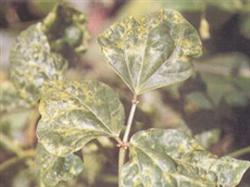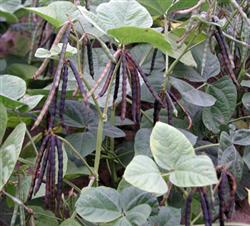Strain technique of fertilization in mung bean

In order to obtain a better yield of mung bean, the suitable fertilization period and the suggested amount of fertilizer for mung bean were put forward. That is, in the early flowering stage of mung bean (the maximum effect period of fertilizer), it is better to apply nitrogen and phosphorus combined application, applying nitrogen and phosphorus compound fertilizer 10kg / mu, or spraying 1.5 kg urea and 1 kg potassium dihydrogen phosphate per mu, divided into 2 times. 0.5-1.0 kg urea and 400 kg 500 g potassium dihydrogen phosphate each time, 60-65 kg water was sprayed. Because for every 100kg mung bean seed, it needs to absorb 9.68kg of nitrogen, 2.93kg of phosphorus (P2O5) and 3.51kg of potassium (K2O). Except for nitrogen, which comes from the atmosphere, the rest of the nutrients are absorbed from the soil. The vegetative growth stage of mung bean is from emergence to flowering, and from flowering to bulging is the stage of both vegetative growth and reproductive growth, which is not only the vigorous growth period of the plant, but also the key period to determine the grain yield and quality.
- Prev

Direct seeding cultivation techniques of mung bean in summer
Symptoms: the disease mainly occurs in the rainy season in summer and autumn. After infection, the leaves showed brown round to irregular blister-like spots, initially water stains, then gangrenous, seriously corked, and often multiple spots gathered into gangrenous spots. Petioles and pods also show small brown spots or strip spots.
- Next

high-yield cultivation technique of mung bean (II)
V. Timely shoveling and topdressing At present, mung bean production has less investment, extensive management and low yield level, so field management should be strengthened. Especially mung bean seedling growth slow, easy to be grass bully, affect growth and development, management should be timely. During the growth period, generally before flowering pods to carry out intertillage weeding 3 times (three shovels).
Related
- The first cup of black tea in spring, the flavor and history of tea gardens in Kenya, Africa
- The computer can not only choose potatoes, but also grow tea rice. AI will grow winter oolong tea champion.
- It is not only the inflated tea bitten by insects, but also engraved with the four seasons tea in Beipu.
- The Oriental Beauty Tea Festival in Zhuxian County takes the stage at the weekend to experience the plus-size feast of oil tea.
- & quot; Oriental Beauty Tea & Exploration of Emei in Hsinchu, the hometown of quot;
- The new variety of strawberry "Tainong 1" dessert is the first choice with mellow aroma. Crimson gorgeous
- History of Tea in Taiwan: from Wild Inner Mountain to Export Tea Garden
- Two types of Taiwan Oriental Beauty Black Tea won the British three-Star Award for Childhood Tea Xiang Zhang Jiaqi changed from pilot to champion tea maker.
- Banana species and varieties: the planting history of Taiwan Xianren banana and dwarf banana is long, is banana disease resistant?
- Coffee planting Technology: Qianjie Coffee from Seedling to harvesting

